|
So one Sunday in May I discovered this: Here's the story. Just after 4am on Sunday morning I woke to the sound of house alarms ringing in the neighbourhood. So annoying! Then it registered that the reason house alarms sometimes trigger is usually related to a power cut, so I groggily reached for my phone to check on the tank. The first thing I noticed was that I'd received a disconnect notification from the return pump which was confirmation that there was a power issue. I tried checking on the tank via the webcam but it wouldn't connect so I tried the bedside lamp. That switched on so clearly the power was restored, I rolled over and went back to sleep. When I got up in the morning the house alarm display was showing an error code but I didn't care about that because immediately after I discovered the water level in the DT was abnormally low. The return pump was not working!! Whatever kind of glitch in the power/internet had knocked out the controller for the return pump and it had not restarted again, this had never happened before. I unplugged it and plugged it back in and water immediately started flowing again. However as soon as water began recirculating the temperature monitors started alarming. I watched as the temperature dropped to 23.5. OK, hopefully that wasn't too bad but 15 minutes later I noticed the tank was starting to look a bit cloudy, uh oh. I checked the refugium and found a significant gathering of mini brittlestars. The temperature dip had triggered them to spawn on mass. I have never seen so many little waving legs in my life, they were everywhere. Up in the DT brittlestars appeared out of every nook and cranny, climbing up literally every coral to spawn. I knew I had a fair few in the tank but I had no idea there were that many. The water got cloudier and cloudier so I started prepping for a water change. Fortunately nothing has been too badly affected by that event but it's not something I'm eager to repeat. I do have multiple temperature probes in case of failure but they are all positioned in the sump. I moved one of the sensors up to the DT so if it happens again I will be alerted but having said that the audible alarm is so puny I doubt I would hear it at night. I should probably invest in another temperature probe for the profilux because when that sounds I most definitely hear it and it scares the life out of me.
0 Comments
My Balanophyllia coral spawned again on Saturday, 29th January 2022. This is the second time I've witnessed it release gametes, the first time was 30th October 2020. It's not exactly the same time of year, or even phase of the moon for that matter, but it did happen at the same time of day i.e. first thing in the morning. I really wish that I had more of this species, it would be so cool if one was female and released eggs at the same time. I have been looking to add more but they are not commonly available here unfortunately.
I posted a short video to Instagram, the spawning event went on for quite a few minutes.
Coincidentally I took a couple of photos of the coral the night before it spawned, it looked the same as it normally does.
Yesterday was pretty eventful, my pair of pink streaked wrasse spawned for the first time. I guess that means that I was fortunate enough to choose a male and female after all. The female had been looking fat all week but yesterday she looked like she'd swallowed a marble, so round was her tummy. The pair seemed to be displaying/interacting a lot and this intensified a couple of hours before lights out so I sat down to watch them. The male would display to the female by swimming on his side next to her and his colouration changed too (I'm not exactly sure to what because the lighting was really, really blue at that time plus I was sitting too far away so not to spook them). The rear of her belly next to the vent went very pale/white. The romancing/courtship went on for about an hour, they would come together, rise to the top of the tank and swim back down again. Finally, about 50 minutes before the lights go out, they did the deed. I downloaded the footage from my webcam but the quality is bad, I mean really, really bad but I'm still pretty excited to have captured it anyway. Maybe when/if it happens again I can try to record it on my phone but the lights will still be blue so it might not be that much better. I have cropped the footage a bit and tried colour correcting some of the blue (also the glass needs a wipe). It's a blink and you'll miss it kind of moment, so if that happens check out time stamp 1:20 (top left of the screen). On the morning of the 24th October I discovered the orange Dendrophyllia spawning. It's the first time that I've witnessed this in over 2+ years. I immediately grabbed my phone but I sadly missed most of the action. Anyway I managed to capture a bit of it, I started off handheld but changed to tripod after a short while, hopefully you get the idea. Some of my fish make an appearance towards the end wondering what all the fuss is about. Then six days after the Dendrophyllia spawned I discovered the Balanophyllia going for it too. Did the first spawning event trigger it or was it just that time of year? I am hoping that both spawning events occurred because the corals are happy and well fed and not because they are stressed into making a last ditch attempt at procreation.
One of the recently added Trochus snails has sprouted a lush growth of Ulva on his shell. From what I've read this algae seems to be doing the rounds at the moment and since I don't keep any big herbivorous fish, or indeed intend to, it could become a headache for me if/when it spreads. Also I've noticed the appearance of a few patches of what I believe to be green cyanobacteria on the rockwork. I'm hoping this doesn't get any worse. Lastly I discovered another tiny Aiptasia in the tank. . It was growing on the tube of my Coco worm, either it came in with the worm or it has settled onto the tube whilst it's been in my tank, I kind of hope it's the former and not the latter. Where there's one there's probably many more waiting to be discovered. Oh joy! Now for some possibly good news, the Coco worm, Protula bispiralis 'seems' to be doing quite well so far. I'm basing this off of the fact that it's extended it's calcareous tube quite a bit over the last month. If it can lay down some new tube then it must be getting enough to eat, right? When I came to treat the aforementioned Aiptasia with Aiptasia-X, I tried to make it go in first by poking it but despite literally brushing the feathery head three or four times with a pipette it refused to retract. I went ahead and treated the Aiptasia anyway and it stayed out during the entire procedure. I was somewhat concerned by this lack of responsiveness but I just watched a hermit crab crawl over the worm today and it retracted quick as a flash so I guess it simply wasn't bothered enough by me. Here's a few crappy zoomed in iPhone pics showing the tube growth. The first shot was taken on the 3rd June and the second was taken this morning, 4th July, just over a month later. Also I made an exciting discovery whilst performing a water change. I was pumping fresh saltwater into the sump when I noticed some unusual ‘blobs’ moving around down there. On closer inspection I discovered they were baby Trochus snails. How cool is that! OK, I know it’s nothing unusual for snails to spawn in reef tanks but this is the first time I have actually had them settle out and grow into proper baby snails in my tank. So far I have counted 4 of the little chaps but I'm sure there will be more hidden away.
Here’s one of the wee chaps cleaning the base of the skimmer. He’d better not make his way into the pump..... You may have noticed the excessive number of white spots in the background of some of my previous coral photos. Spirorbid worms have been having an absolute field day in the tank, they are literally everywhere, the back wall looks like it has a bad case of the measles. I have never seen these worms spread as fast as this in any of my previous tanks but then I've never fed so much food as I have been doing in this one. Those of you that like a nice clean back to your tanks will absolutely hate my tank, lol. Anyway this leads me nicely to the new items of livestock added (along with the 6 Trochus snails mentioned in my previous post). I had this wine-fuelled crazy thought that since the filter feeding Spirorbid worms were doing so well it might be nice try some other filter feeding worms too. It seemed a waste of postage to be just ordering 6 Trochus snails. This was might not have been a good idea but I'm going to give it a jolly good go. So I have added a Coco worm, Protula bispiralis, and a couple of other fan worms (Sabellidae sp.). I added them in May and after a month they were looking OK, other than that I couldn't really say very much. I don't know what an ailing tube worm looks like. Time will tell I suppose. Here's a quick iPhone shot of the Coco worm, it's just so lovely and I never thought I'd be saying that about a worm. Lastly before I post FTS I want to mention my conches. For the first time I actually have enough open sand to keep a pair of these totally awesome molluscs. Dyson was introduced to this tank after the cycle and Henry was moved over from the Reefer 170. Well, Henry must be a Henrietta because it was love at first sight for these snails and they have been making sweet love a LOT! And here is Henrietta laying the eggs, forming a lovely snot ball of sand. Finally a FTS (taken 19th June 2020) showing all of the fish bar one (Flash the Whitecap goby is tucked up in his burrow).
The fish list in order of purchase: Tanaka's possum wrasse x 1 (18th December 2016) Pink streaked wrasse x 1 (28th January 2017) Yellow wrasse x 1 (21st August 2017) Rainfords goby x 1 (19th August 2018) Helfrichi firefish x 1 (1st August 2019) Spotted mandarin (male) x 1 (1st August 2019) Whitecap goby x 1 (12th October 2019) Fathead anthias x 1 (7th March 2020) It may have been Good Friday (10th April 2020) when this happened but for me it was a BAD Friday. I decided that the time had come for me to move over Clive the Crocea clam from the Reefer, I knew it was going to be stressful for me and undoubtedly for Clive too but I underestimated just how stressful it was going to be for all concerned. Clive has been struggling recently due to being crowded out by corals on all sides and from above too. I had already removed the shading from above (the gorgonian) but the zoanthids growing up his shell were becoming a real issue (again) and I'd put if off for way longer than I should have. I knew that I wanted him off that rock completely and I felt the only way to do that was literally breaking the rock apart. I didn't want to mess around with trying to cut the byssal threads or anything like that. So the whole rock had to come out. Fortunately on set up I'd drilled holes in the rocks and used an acrylic rod to stack them together so only the top rock needed to be removed. Even so that meant pulling out a large expanse of Superman Montipora, the Seriatopora and a whole load of Utter Chaos zoanthids too. Here's the rock in a 25l bucket, Clive can just about be seen in the bottom left hand of the photo. Once I'd pulled off a handful of zoanthids obscuring the lower portion of Clive's shell we got to work on the rock with a hammer and chisel. It was brutal to be honest, the Monti was smashed to pieces and branches of Seri were snapped off right, left and centre. Eventually we ended up with a tiny bit of rock still attached to Clive and his foot appeared to be intact, phew! Then I got to work with a scalpel, scraping off each and every zoa. This is how he looked before his haircut: and here he is afterwards, mission accomplished. He even started to extend his mantle in appreciation. After acclimation I placed Clive in his new home and swiftly opened a bottle of wine to celebrate a job well done except that when I went to check on Clive later I discovered a cloudy tank and found him spawning. My first thought was "Wow how cool, I must record this!" but then as the tank got cloudier and cloudier I began to worry if the filtration of a 2 month old tank could cope with such a large and sudden influx of protein. I googled clam spawning and realised I should probably take action right away. Luckily I already had 20l of saltwater made up already so with the help of my family we began siphoning out the eggs every time they were released. I also set the RO unit to start collecting more water in case extra was needed. Finally Clive was spent and we were too. I tested the ammonia levels 2 hours after the spawning and again after another 2 hours but I couldn't detect elevated levels, thank goodness. I learned something new that day, that clams release sperm AND eggs. The sperm is released first till exhausted and then the eggs are released. Maybe Clive should actually be called Harry/Harriet or something. Clearly this was a stress induced spawning event, sorry Clive. I spent a rather sleepless night in bed worrying if I would get up and find a dead tank in the morning but luckily everything seemed fine. All the fish were present and correct and Clive had his mantle fully extended. He has lost colour in one area due to shading by the zoas but hopefully he can recover that now he's in full light again.
It's been a month since I discovered some baby sun polyps in my tank. There are five that I am aware of, all are still present and correct and appear to be getting a tiny bit bigger. I am not feeding them directly so they must be catching whatever fish food or plankton that happens to pass by.
For growth comparison shots please see here. I was studying the rock work this morning with a magnifying glass as I tend do on a regular basis (I'm weird that way) and I came across an unknown polyp on the rock work. My initial reaction on seeing suspicious tentacles waving around in the tank is generally, uh-oh here we go, Aiptasia again, but I quickly realised the colour looked wrong for it to be a glass anemone. Out came the camera for a closer look and what do you know! It's a baby polyp of, and this is where it gets tricky, either the Balanophyllia sp. or Tubastrea sp. corals, I'm not sure which. Further scouring of the rocks turned up one additional baby polyp tucked away under an overhang. There may be more hidden in there just waiting to be discovered, I will be keeping my eyes peeled.
I've had the Balanophyllia for just shy of 3 months and the Tubastrea for just under a month. It seems too soon for it to be the sun coral but I guess it could have released larvae shortly after it was introduced. I have no idea how long it takes for a baby sun coral to grow into a recognisable polyp. As you can see it's still pretty small at the moment, those are vermatid snails and spirobid worms scattered over the rocks next to it for size reference. More research is required and questions asked I think. No matter what species they turn out to be I'm very happy to have discovered them in my tank. Yesterday morning the male T. nudus goby was back out with the female again so I knew immediately that the eggs must have hatched at some time during the night. He had been caring for them non-stop for the last 7 days without eating so I was expecting something to happen within the next two days. I checked on the tank 2 hours after lights out the previous night but there was no sign of any fry at that point. When I checked again in the morning there were a few tiny goby shaped objects floating around the tank and one was even still wriggling but it was swept away by the flow before I could reach for a pipette to catch it. Unfortunately the fry don't really stand much of a chance of surviving intact by the time I get up in the morning to look for them. The powerheads are so fierce and the fry are so delicate, not to mention that I now have a shoal of hungry Cardinals that are always on the look out for any tasty morsels that happen to float by. I expect that they had a breakfast feast yesterday and the Acanthastrea looked suspiciously happy too!
At least I took better notes this time so I'm fairly confident now that the egg incubation period is 7 days so maybe next time if I stay up late or get up really, really early I can actually catch and photograph some..... |
AuthorHi, my name is Lisa and I live in Derby, UK. I am a self-confessed reefaholic! Archives
July 2022
Categories
All
|

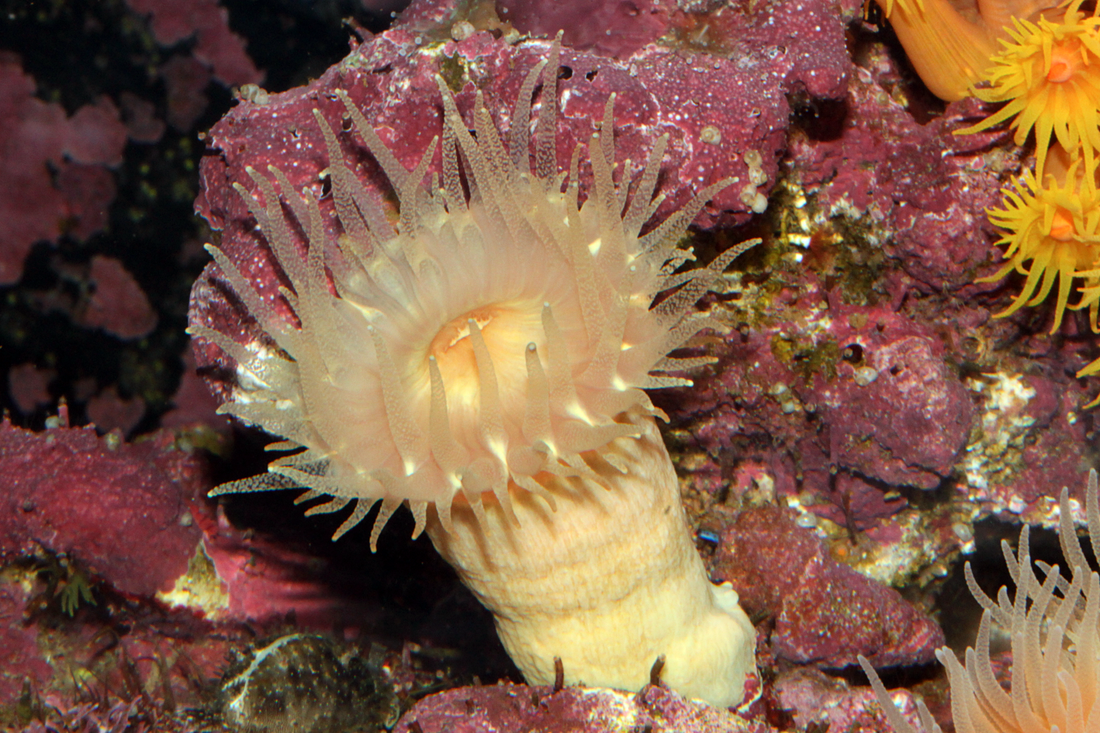
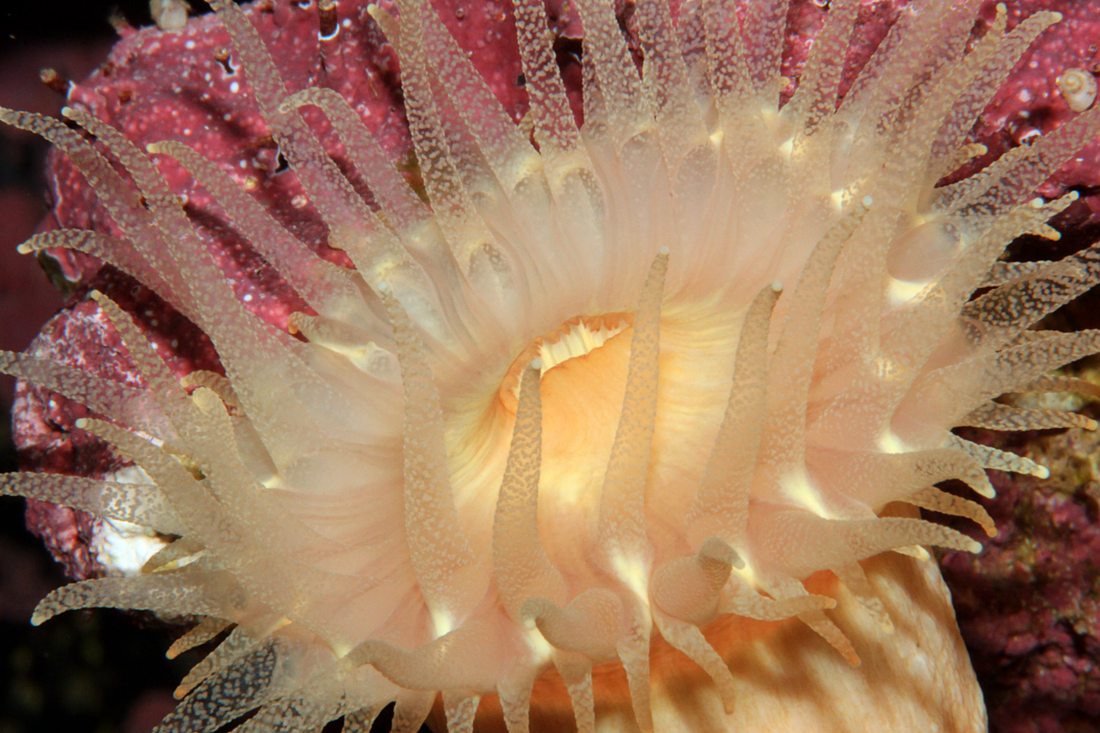
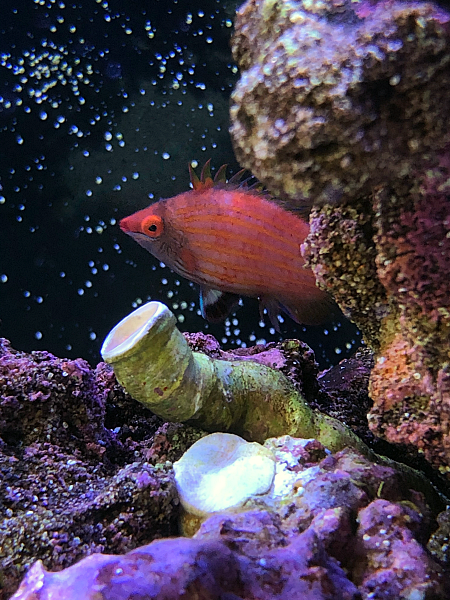
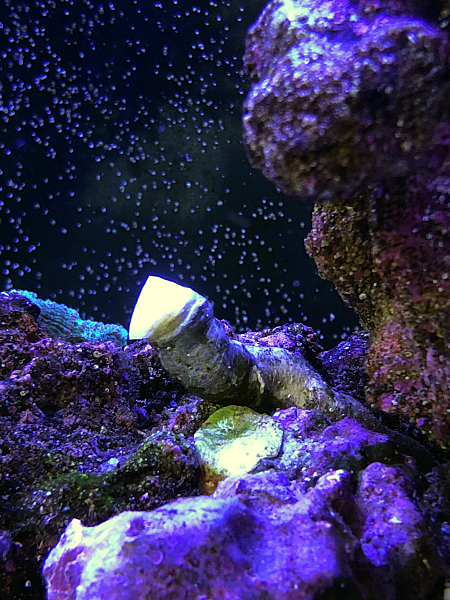
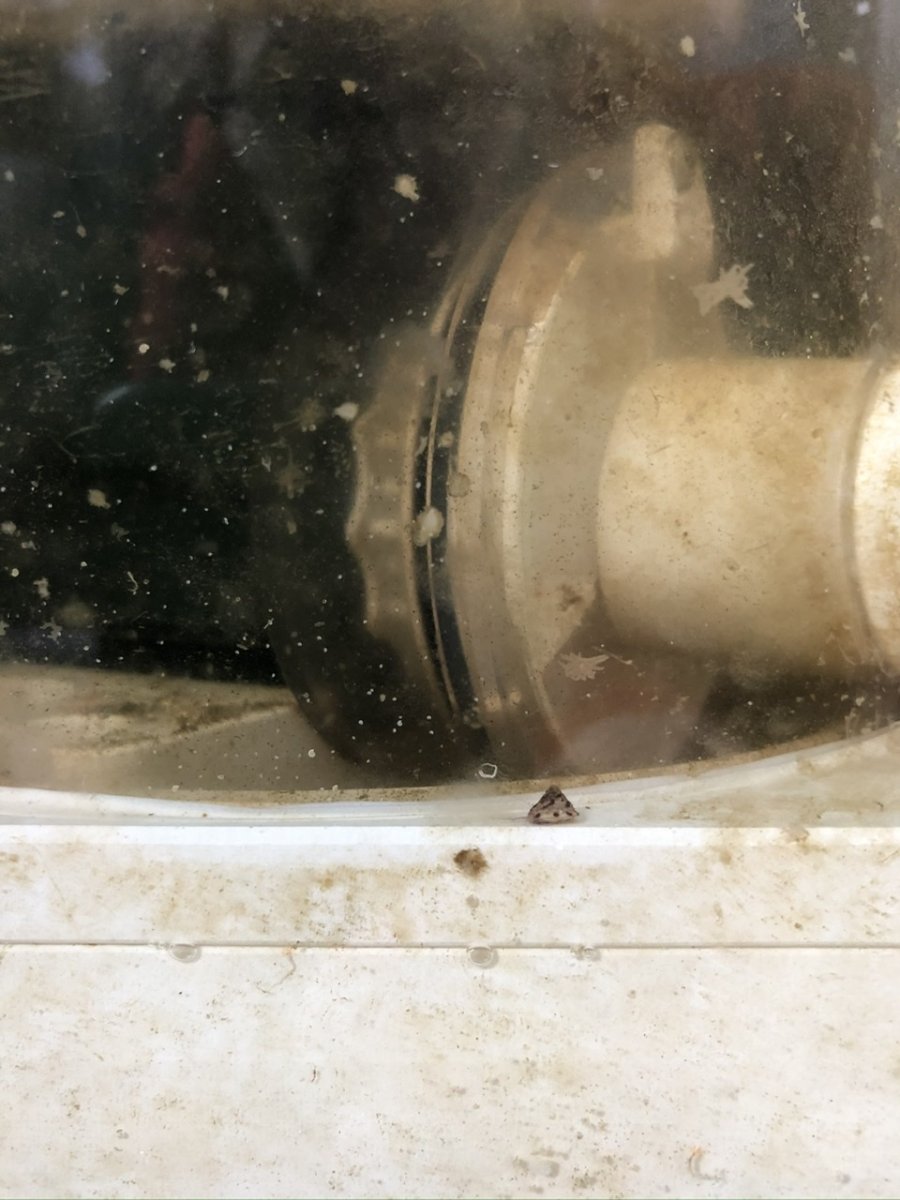
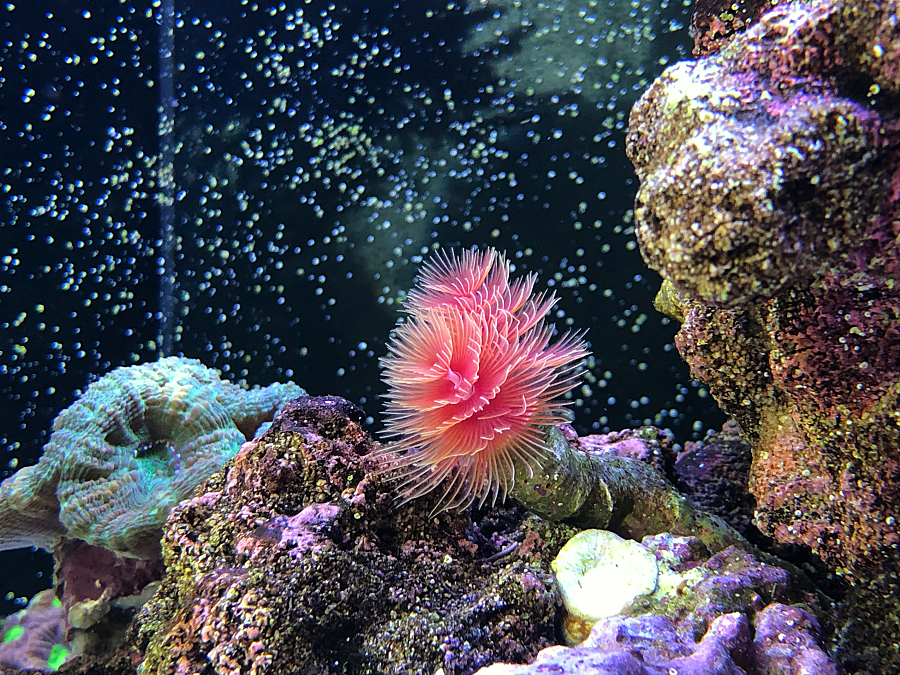
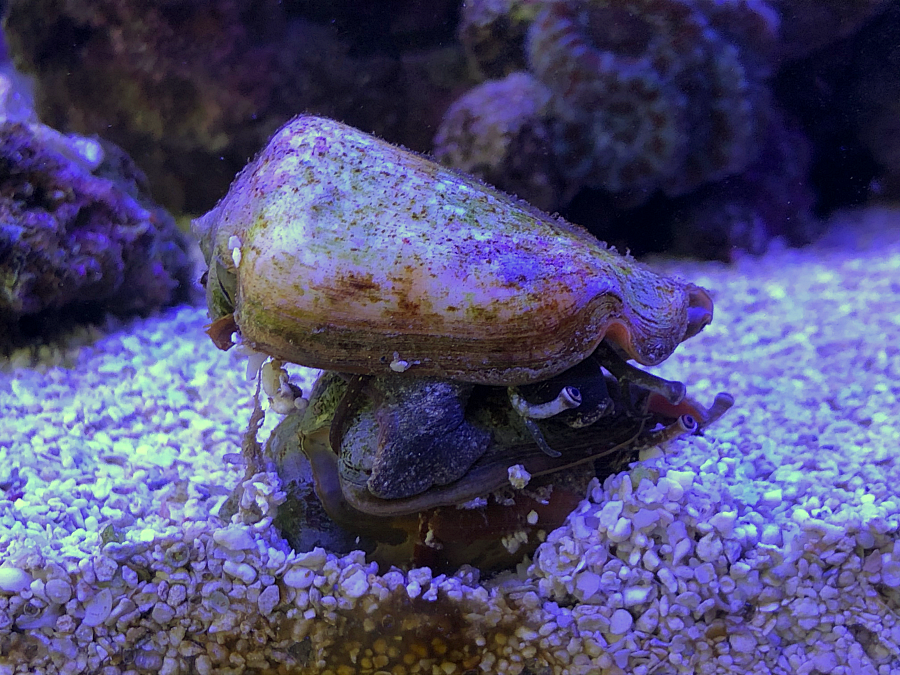
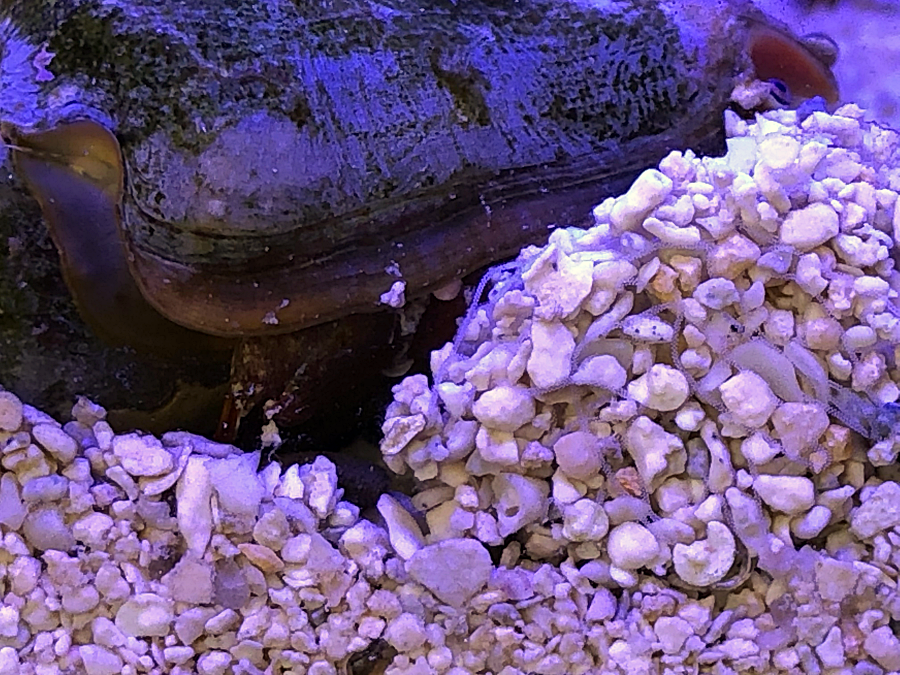
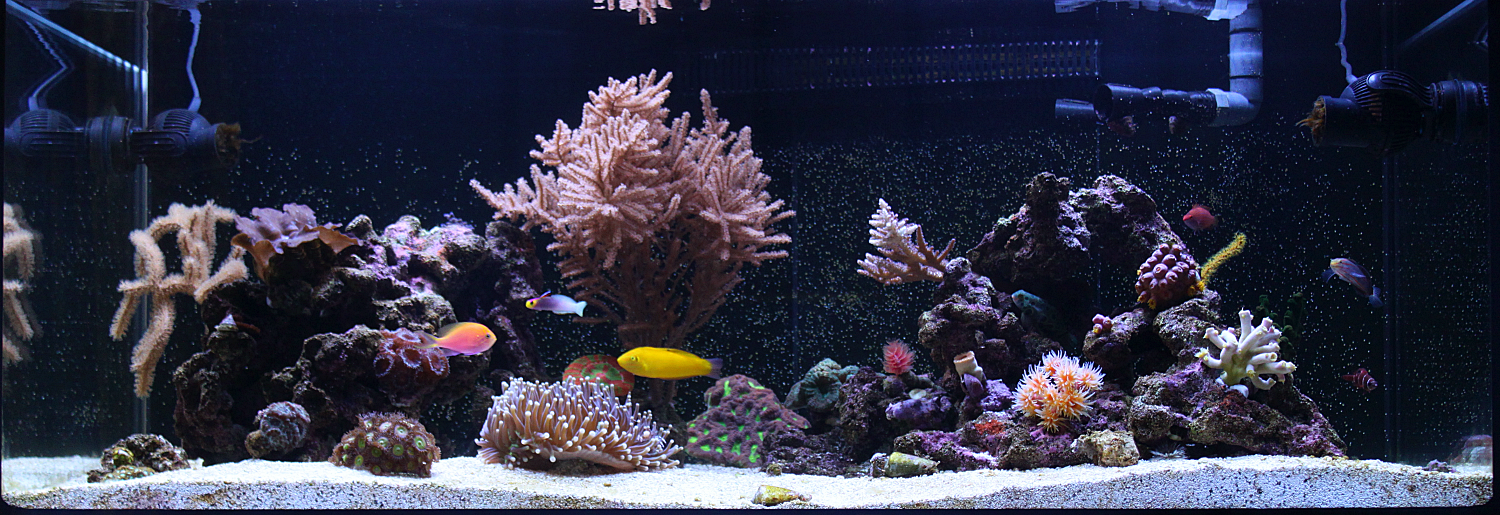
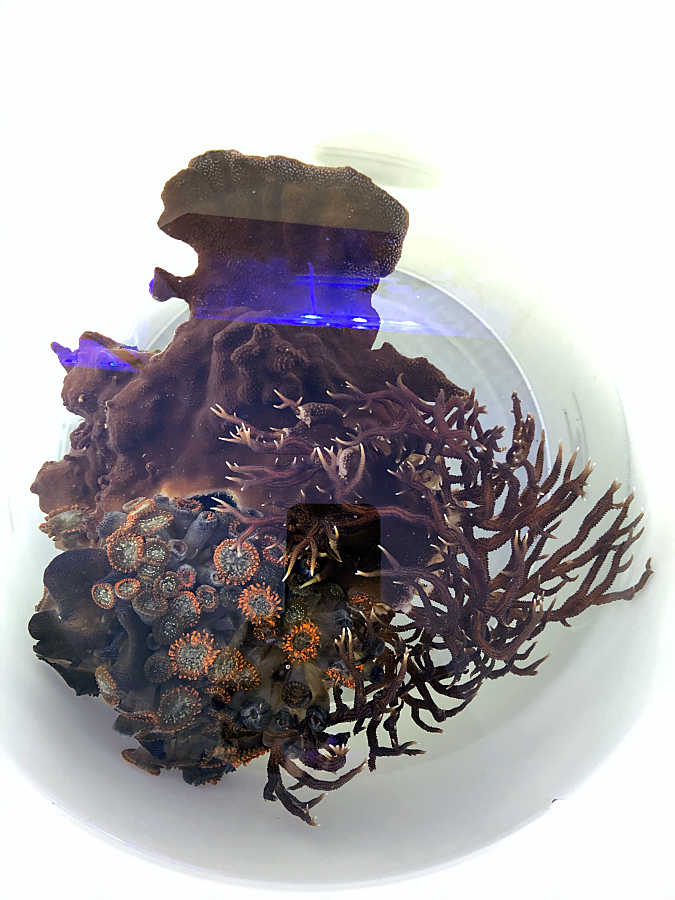
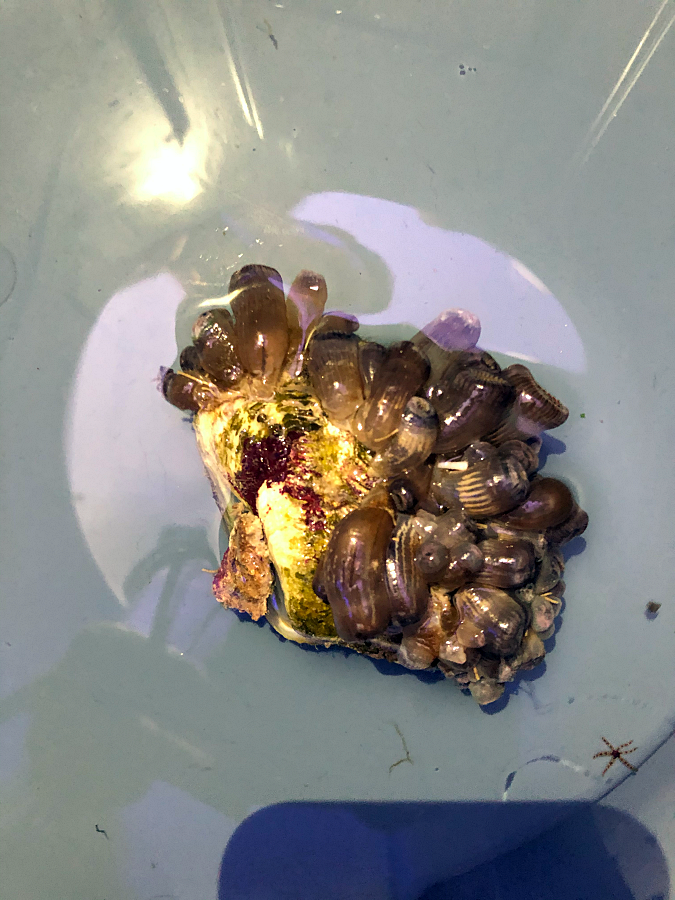
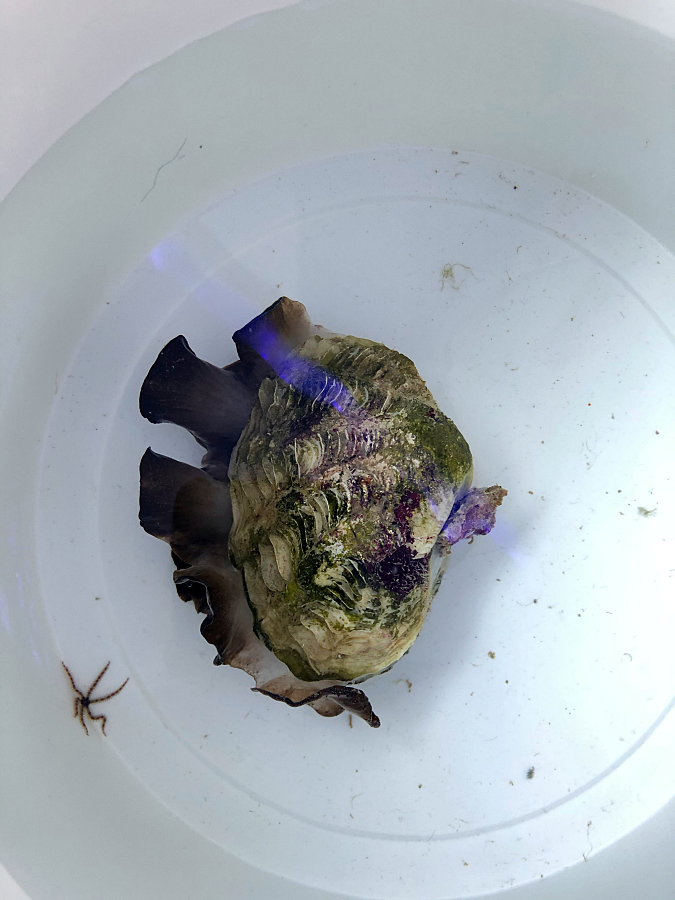
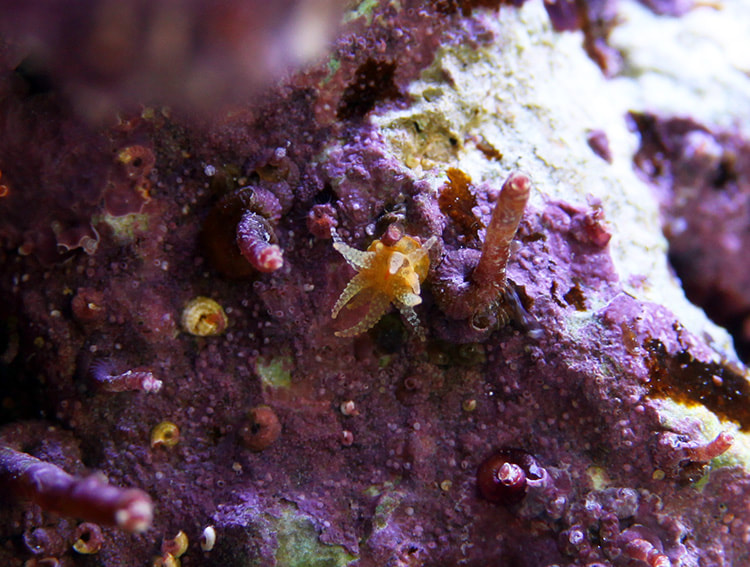
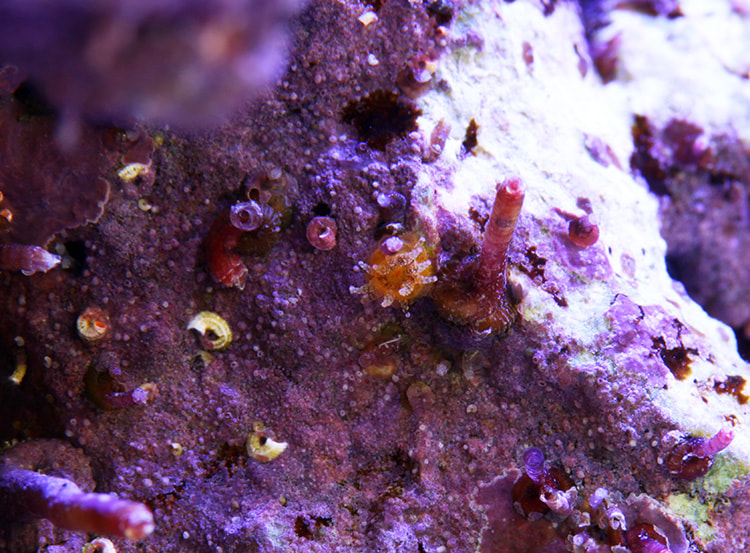
 RSS Feed
RSS Feed
